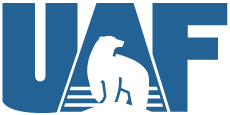Field Courses
Bring your next travel or field course to Toolik Field Station!
We serve as a base for courses across all seasons, age groups, and interests, whether digging into the drivers of a warming permafrost, tracing the flights of migratory birds, or creating art under the aurora borealis. Courses at Toolik immerse students in our community of scientists, who've been studying the Arctic for over 50 years. Through clouds of mosquitos and the polar night, we're here to support your travel course. Learn more about our support below.
Interested in basing a course from Toolik Field Station? Contact our management team at uaf-iab-toolik@alaska.edu to schedule a call.
Toolik Field Station is open for field courses year-round. Polar night begins to end in late January, when the sun rises for the first time since early-November. Winter temperatures often drop into the negatives and can get to colder than -40°F. By April days are longer than 12 hours and temperatures rise to near freezing, though colder temperatures are still possible. Hibernating wildlife re-emerges beginning in late April, and migratory birds amass in late May to early June.
Snow melts by mid-June, and plants rapidly green up. Summer temperatures average around 50°F, though can rise to the 70s˚F and drop to the high 30s°F. Days continue to be long until September. A consistent snowpack starts to rebuild in October as lakes and streams freeze.
Science occurs year-round at the station, though research activity peaks June through August.
Toolik Field Station is accessible on Alaska’s road system via the Dalton Highway, a rugged, mostly unpaved road stretching from north of Fairbanks to Deadhorse. We are located at mile 284.5 of the Dalton—360 miles north of Fairbanks and 130 miles south of Deadhorse.
Groups typically travel to the station by driving from either Fairbanks or Deadhorse. It is possible to charter a small aircraft approximately 15 miles south of Toolik to Galbraith Lake, where an unmanned airstrip is maintained. Charter flights are expensive and limited in seats.
Toolik Field Station does not provide transportation for field courses. See our transportation page for more information on renting Dalton Highway-ready vehicles.
Toolik Field Station staff are available to provide tours of the station facilities, nearby long-term research plots, and our naturalist hiking loop.
Facility
We provide classroom and lab space upon request. Classrooms have a projector, seating, and a chalkboard or whiteboard. Common-use lab and field equipment is also available.
Field Safety
For emergency medical triage, there is an EMT on-site and a medical clinic with basic
care.
Additionally, Toolik stocks common field safety supplies, including bear spray, satellite phones, first aid kits, free for all station residents to use.
We recommend (but do not require) that travelers to Toolik have emergency medical evacuation insurance, in the case that they need to be flown out of the station to the nearest hospitals in Fairbanks or Anchorage.


